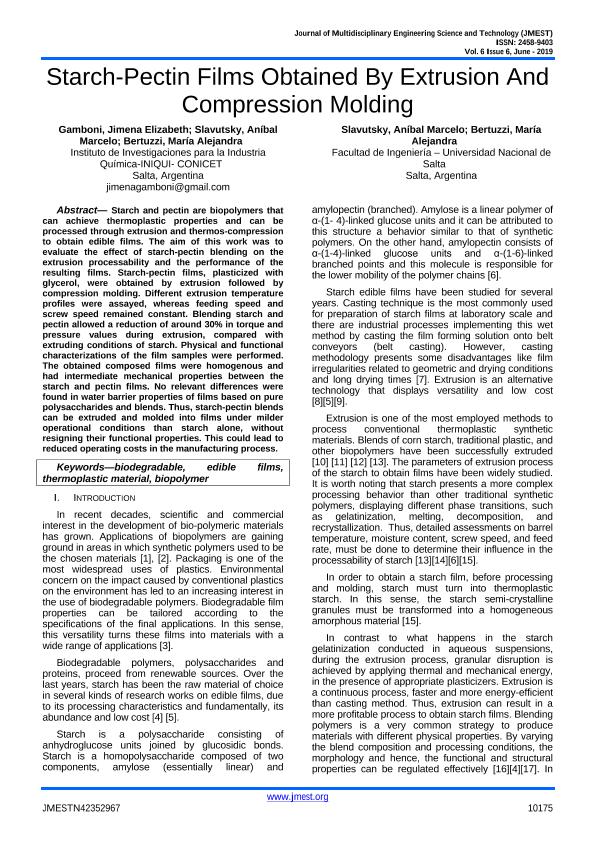Artículo
Starch-Pectin Films Obtained By Extrusion And Compression Molding
Fecha de publicación:
06/2019
Editorial:
Editorial Management System
Revista:
Journal of Multidisciplinary Engineering Science and Technology
e-ISSN:
2458-9403
Idioma:
Inglés
Tipo de recurso:
Artículo publicado
Clasificación temática:
Resumen
Starch and pectin are biopolymers that can achieve thermoplastic properties and can be processed through extrusion and thermos-compression to obtain edible films. The aim of this work was to evaluate the effect of starch-pectin blending on the extrusion processability and the performance of the resulting films. Starch-pectin films, plasticized with glycerol, were obtained by extrusion followed by compression molding. Different extrusion temperature profiles were assayed, whereas feeding speed and screw speed remained constant. Blending starch and pectin allowed a reduction of around 30% in torque and pressure values during extrusion, compared with extruding conditions of starch. Physical and functional characterizations of the film samples were performed. The obtained composed films were homogenous and had intermediate mechanical properties between the starch and pectin films. No relevant differences were found in water barrier properties of films based on pure polysaccharides and blends. Thus, starch-pectin blends can be extruded and molded into films under milder operational conditions than starch alone, without resigning their functional properties. This could lead to reduced operating costs in the manufacturing process.
Palabras clave:
BIODEGRADABLE
,
EDIBLE FILMS
,
THERMOPLASTIC MATERIAL
,
BIOPOLYMERS
Archivos asociados
Licencia
Identificadores
Colecciones
Articulos(INIQUI)
Articulos de INST.DE INVEST.PARA LA INDUSTRIA QUIMICA (I)
Articulos de INST.DE INVEST.PARA LA INDUSTRIA QUIMICA (I)
Citación
Gamboni, Jimena Elizabeth; Slavutsky, Anibal Marcelo; Bertuzzi, María Florencia; Starch-Pectin Films Obtained By Extrusion And Compression Molding; Editorial Management System; Journal of Multidisciplinary Engineering Science and Technology; 6; 6; 6-2019; 10175-10183
Compartir




